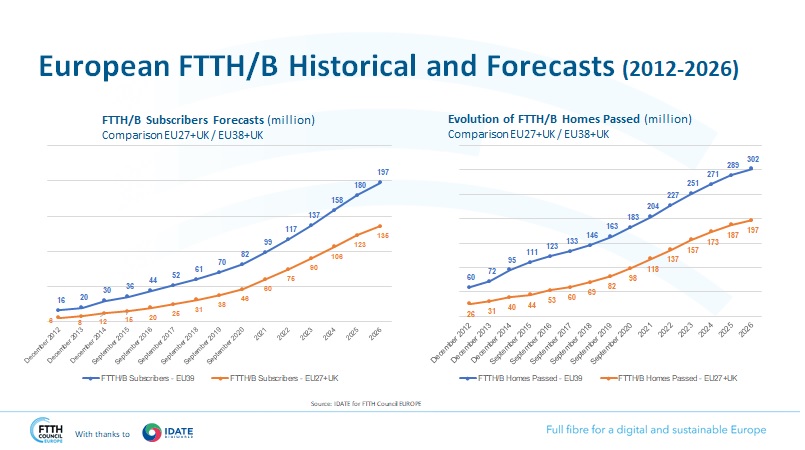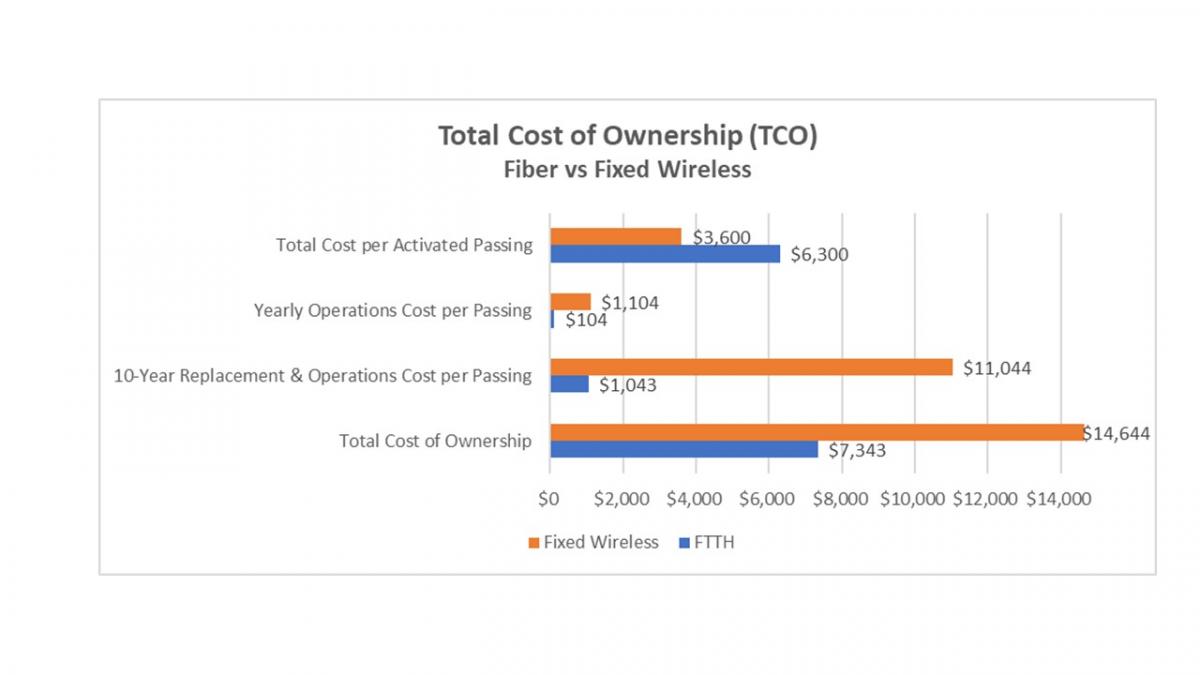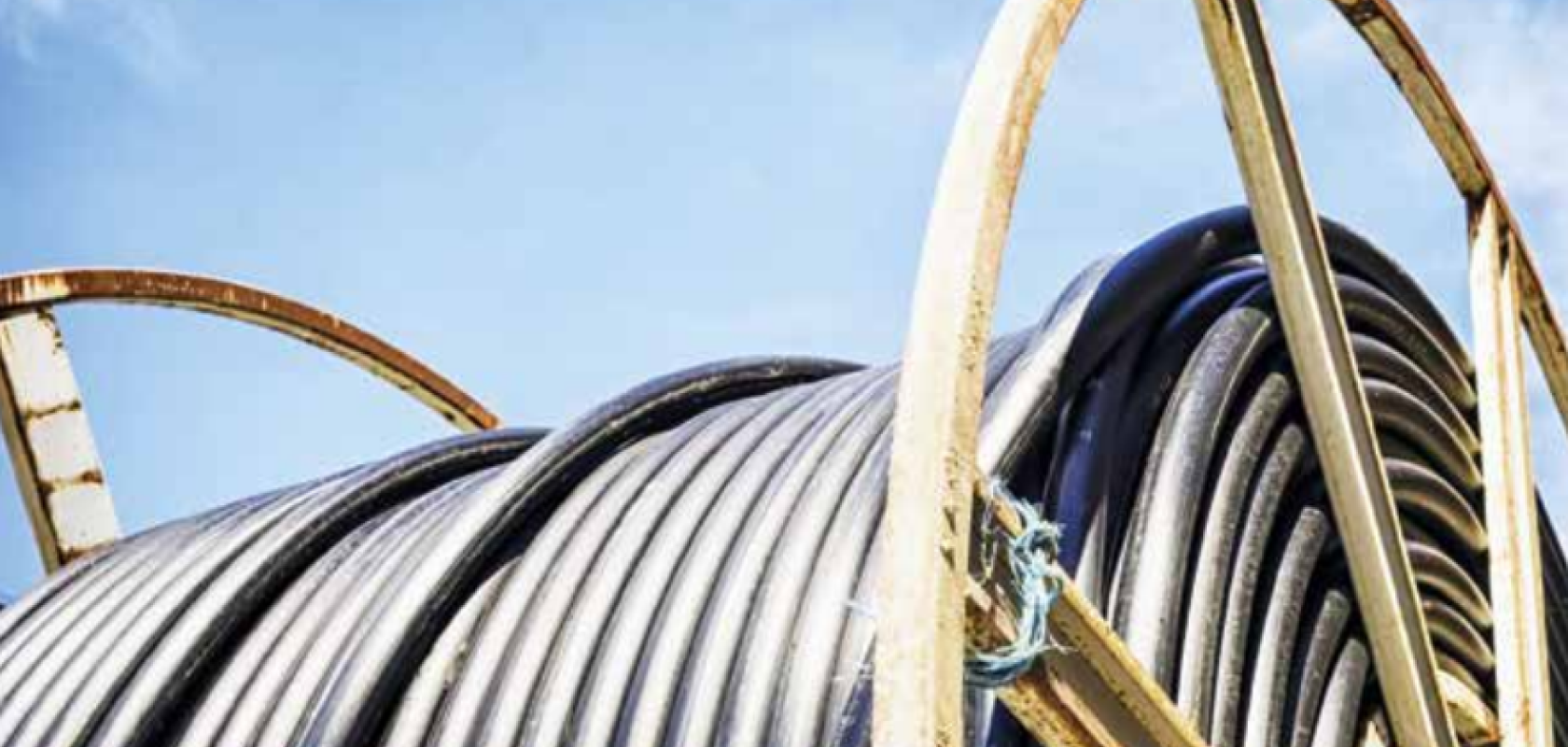Fibre deployment is progressing at a rapid pace across the globe. In Europe, according to the FTTH Council Europe’s most recent Market Panorama figures, a key milestone has been achieved with FTTH/B Coverage in EU39 reaching more than half of total homes. The market forecast also demonstrated that fibre is expected to be available to 80 per cent of European households within five years, indicating an acceleration of the market.
Vincent Garnier, director general at the FTTH Council Europe, explained that this positive trend can be explained by several factors, highlighting regulation and political objective, and the pandemic as two particular drivers.
‘The European Electronic Communications Code (EECC) provided investors with regulatory certainty,’ said Garnier. ‘It gave a long-term political signal by setting out a clear objective for National Regulatory Authorities to promote take up of, and investment in Very High-Capacity Networks, which we understand as FTTH or FTTB. Many regulatory incentives were also created in the EECC for companies willing to invest (e.g. co-investment, wholesaleonly model).’
Moreover, explained Garnier, the president of the European Commission Ursula von der Leyen referred to digital in her State of the Union speech as the ‘make-or-break’ issue, putting fibre and 5G at the core of Europe’s strategy. He said: ‘In its proposal “Path to the Digital Decade”, which spells out targets for 2030, the European Commission’s proposed level of ambition is that all European households are covered by a Gigabit network, with all populated areas covered by 5G.
Regulatory toolbox
‘We believe that the creation of a regulatory toolbox in the EECC to reward investments while safeguarding competition, combined with clear objectives, is a very efficient combination to foster network deployments. Ultimately, the solution will be a genuine mix of private investments which will be complemented by public money from State Aids and the Recovery and Resilience Facility Fund in areas where there is no business case.’
When it comes to the pandemic accelerated trends, Garnier revealed that during the pandemic demand for connectivity increased, but end-users realised that not any connectivity would answer their needs. ‘They started to request reliable ultra-fast connectivity,’ he said, ‘which can only be delivered if it is supported by a robust digital infrastructure such as fibre. This surge in demand for full fibre, in turn, accelerated investment decisions.’

But there are still many challenges, not least in terms of network deployments, sustainability and digitalisation/skills. ‘The connectivity challenge,’ said Garnier, ‘can be addressed from several aspects. With 45 per cent take-up today, FTTH investments are under-utilised and some measures can help address this next challenge.’
He used the example of the development of new mass-market services relying on the capacity of full fibre. ‘This will trigger subscriptions by end-users,’ he said, ‘and therefore upgrading home connectivity, to avoid bandwidth bottlenecks at the edge of the network, is also a key element on which our in-home broadband excellence committee is currently working on.’
Is it fibre?
In addition, avoiding misleading advertising will be important. Garnier continued: ‘Using “fibre” or “fibre speeds” in advertisements for copper-based broadband, when the advertised product is not genuinely based on a full-fibre connection is key. Misusing the word fibre in advertisements prevents the consumers from making an informed choice about the products which are available to them and risks hindering fibre take-up and the fibre business case.’
Plans for the retirement of copper are also essential; Garnier believes that copper switchoff will play a major role in the uptake of fibre. This transition needs to be prepared so that no citizen or business is left behind.
Finally, said Garnier, public authorities will also play a role, ‘both with the digitalisation of their services and by incentivising citizens with demand-side measures such as vouchers to take up full fibre services.’
The sustainability challenge is also a key area where full fibre can play a role as it is key to align the digital and sustainability agendas. Explained Garnier: ‘Full fibre is the most futureproof technology with unmatched quality parameters (latency, robustness, reliability, symmetry) and it is also the most energyefficient technology. As a result, mandating the use of full-fibre networks can help to achieve the objective of carbon neutrality as set in the European Green Deal.’
The right path
In conclusion, Garnier believes that Europe is on a good path from a connectivity perspective: ‘Countries with strong legacy copper networks or important coaxial cable presence, and which started deployment of fibre later than the others, are now lagging behind but they have announced very ambitious deployment plans.’
Garnier explained that the business case for fibre is now undisputed. ‘The only uncertainties that remain,’ he said, ‘are how deep public authorities can go in stimulating demand, how fast the migration from copper to full fibre networks can happen and what measures to develop digital skills will be taken in order to ensure that all citizens and businesses can reap the benefits of an ultrafast connected society.’
The FTTH Council Europe’s Market Panorama also found that the alternative network and internet service providers (altnets) still constitute the largest portion of FTTH/B players, with a contribution of 57 per cent of the total fibre expansion.
Malcolm Corbett, CEO at the Independent Networks Cooperative Association (INCA) explained: ‘2021 started with the UK playing catch up to its European and OECD counterparts in terms of full fibre penetration,’ he said, ‘with only around 20 per cent of households having access to a full fibre network at the end of 2020, compared to more than 90 per cent in Portugal. In fact, data published in autumn of this year, in a report from the FTTH Council Europe, suggests that the number of FTTH/B subscribers in Europe is expected to double to 197 million by 2026.’
Independents day
Like Garnier, Corbett feels that this has been led by increased demand, as working from home moves from being a pandemic necessity to a way of life. ‘The UK (along with Germany and Italy) is expected to see a dramatic increase in both the number of homes passed and the subscription take up rate in the next few years,’ he said. ‘Thanks, in no small part due to the work of the independent broadband sector, the UK is now deploying fibre at the highest rate in Europe and is making significant progress toward the development of “Gigabit Britain.”’
INCA published its own research in June to help quantify just how important the altnets have become to supporting the government’s target for achieving the goal of making 85 per cent of the UK gigabit capable by 2025. ‘It showed,’ he said, ‘that more than 2.5 million homes and businesses could now connect to an independent fibre broadband network, which represented more than 110 per cent year-on-year growth.’
Corbett went on to say that today, more than 1.1 million properties have live connections to fibre networks provided by independent broadband providers – more than 30 per cent of the total. ‘By 2025,’ he said, ‘more than six million homes and businesses will be using independent networks in the UK. The sector is now more than four times larger than it was a decade ago and continues to attract significant sums of private investment throughout 2021. £15bn will be invested in the delivery of new full fibre connectivity by independent providers before the end of 2025.’
As Garnier also highlighted, however, Corbett acknowledged that we still have a long way to go. ‘Earlier in the year,’ he said, ‘the Connected Nations report placed the number of homes able to get gigabit capable broadband as being just 37 per cent of the country’s total housing stock ( just over 10.8 million). Provided the economic and regulatory conditions remain favourable, independent networks will deliver at least a third of the new infrastructure needed, helping achieve 100 per cent coverage and contributing £20bn to the UK. But a major threat emerged toward the end of the year in the form of the UK incumbent’s Project Equinox.’
Continued Corbett: ‘Superficially, Project Equinox is about reducing costs to encourage ISPs to move customers to BT Openreach’s fibre networks. Yet the likely impact on altnets is to reduce the scope for wholesale competition. This will negatively impact the service providers wanting to use those networks and, ultimately, consumers who are inevitably victims of increases in monopoly markets. In fact, INCA’s own analysis carried out in October, predicts that up to 5 million homes and businesses across the UK will still not be connected to full fibre broadband by 2024 thanks to Ofcom’s decision to allow BT Openreach to deter competition in the wholesale broadband market. The number of unconnected homes could rise further if Openreach slows its own fibre roll out plans owing to a lack of competition from the socalled ‘alt-net’ independent providers.’
Reducing the digital divide
Corbett feels that the UK has a great opportunity to create a truly gigabit Britain, while radically reducing the country’s digital divide. He said: ‘INCA believes that the best way to achieve this is by encouraging a plethora of market players to rapidly build new networks across the country. Deterring the competitive investment that has done so much to accelerate the pace of new fibre deployment will slow fibre roll out and push the UK even further behind its European counterparts. We need to bring all the investment available to the table and we hope to see Ofcom reverse its current position in 2022 and return to its core responsibility for promoting competitive investment.’
FTTH deployment is also an important topic across the pond in the Americas, as Debbie Kish, FBA VP research and marketing at the Fiber Broadband Association, explained: ‘There is no question that high-speed internet access is a must,’ she said, ‘and while there has been very little in terms of advancement in defining what “high-speed” is (currently the FCC defines high-speed as 25Mb/s upstream and 3Mb/s downstream). However, more recently, as part of the new U.S. Administration’s Infrastructure Bill, there has been discussion about a bump-up in that, being 100Mb/s upstream and 20 down, but that is still not enough.’
Kish also cited today’s ‘at home’ workforce and increased use of bandwidth heavy applications to illustrate that even 100/20 isn’t close to what is necessary to be functioning and productive. ‘Then there is the “how can reliable high-speed broadband be delivered” discussion,’ she said. ‘Is it through hybrid coax cable? No. Is it through fixed wireless access? No. Is it via satellite? No. Is it fibre? Yes, because only fibre can deliver symmetrical gigabit speeds, is future-proof, less costly in the long term and carries with it proven additional economical long-term benefits and consistently wins in high consumer satisfaction across multiple factors.’
Is there enough?
On whether there is enough fibre to connect everyone, Kish’s response was: ‘In a word, no. There exist unserved and underserved areas, such as rural North America as well as tribal areas that significantly lack access to broadband resulting in lower productivity, lagging education, declining economic development opportunities, and lack of access to healthcare resources. For example, in rural areas of North Carolina, 33.5 per cent of households (43,000) do not have access to broadband speeds of 50/10Mb/s. Tribal lands are even worse off, with 628,000 Tribal households with no access to the internet according to the FCC. The pandemic set things back even farther when a deadline for native American communities to apply for free broadband licenses to help them build local internet infrastructure had passed.’

So, how do we get there? Kish explained: ‘In carpentry, the phrase “measure twice, cut once” means if you are going to build something, you don’t want to waste time or resources. Similarly in finances and security – “an ounce of prevention is worth a pound of cure.” When it comes to reliable high-speed broadband, the clear choice is fibre. So, let’s break it down: fibre has unlimited capacity and can meet the growing demands from today’s applications and applications of the future. In fact, a joint group of researchers from the Netherlands and the US smashed the world speed record for a fibre network, pushing 255Tb/s down a single strand of glass fibre. The maths equates to 255,000,000Mb/s of broadband speed and can therefore carry all of the internet’s traffic on a single fibre. Additionally, it is what consumers want. About 10 per cent of consumers will change their internet providers each year with the majority of the moves being from DSL or Cable to FTTH when available. In terms of customer satisfaction in work from home environments, fibre earned the highest satisfaction rating.’
Kish believes strategy, planning and time are key to building an economy: ‘Part of the strategy is about future-proof, environmentally friendly and sustainable investments that will best serve and attract businesses and inhabitants to a community and create jobs.’
A shining example
A great example of a well thought-out strategy and execution, continued Kish, is EPB, an electric power distribution and telecommunications company owned by the city of Chattanooga. ‘A decade ago,’ she explained, ‘EPB decided to build an all-fibre network that served as the foundation for its smart grid, resulting in an economic value that exceeded $2.69bn and created more than 9,500 jobs.’
Kish also acknowledged that, when factoring in capital costs, the initial cost to install a fibre network is perceived to be more expensive. However, she pointed out that the operational costs of FTTH networks have proven to be less expensive in the long term. ‘With no external equipment, components exposed to weather elements, accidental damage and other factors, fibre requires very little ongoing maintenance translating to significantly less long-term cost rendering FTTH a better investment over time.’
Labour and skills are one of the biggest challenges faced by operators and service providers globally. Kish explained: ‘Many are down entire crews and have to turn away jobs because they do not have the skilled workers in place. It unfortunately has led to the inability to bring reliable high-speed broadband to communities and close the digital divide.’
To assist with this, the Fiber Broadband Association has developed a programme to bring skilled workers into the workforce to accelerate the deployment of fibre broadband networks across North America. The FBA is working with community colleges and veterans programs, and has a registered apprenticeship with the U.S. Department of Labor.
Concluded Kish: ‘In a post-pandemic environment, the new normal is work from home, relocation to rural areas, and the need for reliable, symmetrical, high-speed broadband, which by definition only fibre can deliver. ‘In other words: if it’s not fibre, it’s not broadband.’


